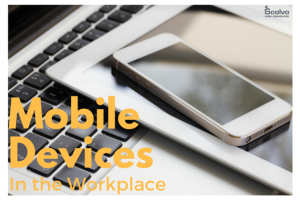Technology, especially mobility, is one of the most important drivers of workplace changes. Not only it affects the tools we use for work, or the data that goes completely digital, but the everyday lives of the workers. So here are the four main areas that need your attention:

Location: Working Anywhere and Everywhere
In Germany, 37% of the workers commute for more than an hour a day. However, in an age where your employees can work from anywhere, it is pointless. The less the commute, the more reduced are the stress levels of the employees, and the less sick days they are calling in for.
The fact that work can be done everywhere, even on the go, has its negative side, too. You, as an employer, might be tempted to disrespect off-times for your workers. Meanwhile, they might have hard times switching off, without the physical distance from work.
Positions: New Roles, New Skills
In most professions, new roles are emerging, while old ones are experiencing a transformation in duties, due to the proliferation of digital technologies. IT is a well-marked one: data scientists, mobile specialists or cloud engineers have only appeared lately, signaling a growing need for specialization. Instead of focusing on one technical area, IT professionals become more of service brokers, with a strong focus on business.
In production, there is a new industrial revolution going on that management needs to adapt to. The internet of things changes the methods used and requires the ability to understand and operate digital tools, in all positions and all levels.
Organization: Processes and Structures Intertwine
Processes, just like organizational structures, have to be digital-proof and, in order to make them so, managers have to think out of the box. Some of the activities are already made redundant by technology and a thorough examination often reveals other opportunities for streamlining. How workers interact during a process can also have an impact on the re-design. The goal is to have an operation that makes the most use of the new tools and how they help to increase productivity and measurement.
Luckily, technology facilitates collaboration. These new ways of teamwork require openness and transparency, and have a disruptive effect on traditional hierarchical structures, giving way to more horizontal alignments.
Information: Instant and On-Demand
The way workers access and process information is already sped up by the broad use of modern consumer technology – businesses just need to find a way to use it to their advantages.
By recording data on-site and saving it to the cloud, field workers or salespeople can give instant heads up to their colleagues about client action and behavior, and this kind of access to information makes decision making faster for the management.
Workers also have to be quicker in general, but they can use great tools as shortcuts and get deeper insights to support decisions. It’s not just the raw information that is always available on-demand, but the analysis as well – the next step in the big data evolution.




